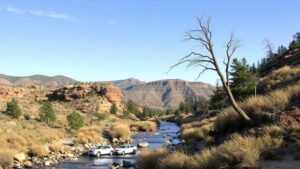How to Dowse for Platinum and Other Precious Metals in River Systems
How to Dowse for Platinum and Other Precious Metals in River Systems
Dowsing is a technique often associated with finding water, but it can also be employed for discovering precious metals such as platinum, gold, and silver in river systems. By utilizing both traditional dowsing methods and modern geological understanding, individuals can increase their success in locating these valuable resources. This article will provide an in-depth exploration of dowsing techniques, the significance of geological characteristics, and actionable strategies for effectively searching river systems for precious metals.
The Science Behind Dowsing
Dowsing involves using a forked stick, pendulum, or metal rods to detect hidden resources. While many consider dowsing a pseudoscience, some studies suggest that it can be effective when combined with environmental cues. Neuroscience indicates that the subconscious mind may interpret geophysical signals, prompting physical reactions that guide dowsers to potential targets. For example, dowsers might feel a tingling sensation or a pull towards certain locations along a river.
Understanding River Systems
Rivers typically carry a variety of sediments and materials, including minerals that may contain precious metals. Key factors affecting the distribution of these metals within river systems include:
- Alluvial Deposits: These are formations created by the deposition of sediments during flood events. Precious metals often concentrate in these areas.
- Geological Features: Valleys, bends, and pool areas in rivers may serve as collecting points for heavy metals due to reduced water velocity.
- Mineral Composition: Certain rocks and soils contain higher concentrations of precious metals. Understanding regional geology can significantly enhance dowsing efforts.
Tools for Dowsing
While traditional instruments like dowsing rods are popular, modern dowsers might also use additional tools to improve their effectiveness. Common tools include:
- Dowsing Rods: Often made from copper or brass, these are held in a loose grip and moved to detect subtle movements.
- Pendulums: A weighted object suspended from a string, pendulums can indicate the presence of precious metals through their swinging patterns.
- GPS and Mapping Software: Digital tools can aid in mapping previously successful locations and understanding historical sediment patterns.
Techniques for Dowsing
Successful dowsing requires practice and familiarity with techniques. A few approaches include:
- Walk the Riverbank: Begin at a point you believe is promising. As you walk, observe the indicators mentioned earlier. Move slowly, allowing the rods or pendulum to react.
- Check Water Flow: Precious metals often collect in eddies or behind rocks where water velocity decreases. Pay attention to these spots.
- Use Ground Patterns: Look for changes in terrain, such as depressions or unexpected plant growth, which might indicate metal presence.
Real-World Applications
Historically, dowsing has been utilized by gold miners in regions like the Sierra Nevada, California, where skilled dowsers were able to locate promising sites through intuition and methodical searching. For example, during the Gold Rush era, dowsers were crucial in guiding miners to productive claims. In more contemporary applications, hobbyist treasure hunters have reported successful finds of platinum and gold in sedimentary environments through dowsing techniques, affirming that this age-old method still holds value.
Potential Challenges and Considerations
While dowing can be effective, it is important for practitioners to remain aware of the limitations and potential inaccuracies involved in this method:
- Cognitive Bias: Dowsers may project their expectations onto results, leading to false positives.
- Environmental Changes: Flooding and sediment shifts can alter previously favorable sites, complicating efforts.
- Legal Restrictions: It is crucial to be aware of local laws regarding metal detection and mining in rivers.
Actionable Takeaways
To wrap up, dowsing for platinum and other precious metals in river systems can be both an art and a science. To enhance your search:
- Gain knowledge about local geology and river systems.
- Practice with dowsing tools to build intuition and familiarity.
- Use modern mapping technology alongside traditional dowsing methods.
- Keep ethical considerations in mind and follow local regulations when exploring potential sites.
By taking a thoughtful, informed approach to dowsing, you may uncover hidden treasures flowing beneath the currents of your local river systems.


